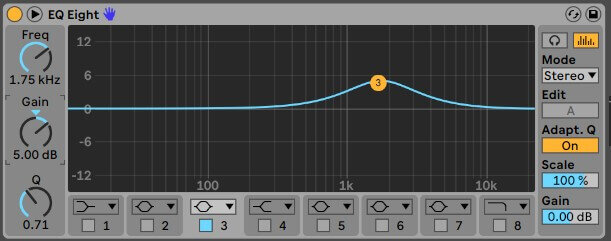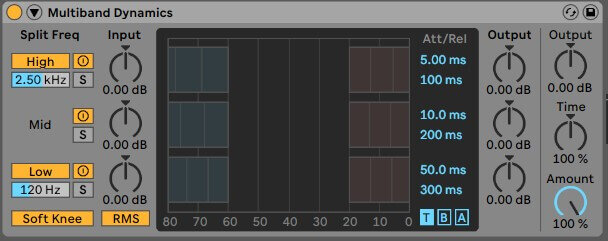There are so many rap songs in pop culture that are praised for their beats. How many songs have hyped you up, had you waiting for the beat drop, and just livened the room?
In the last decade, rap music has revolutionized its production, borrowing from many genres including trap, grime, drill, and more.
Here are 10 rap songs (in no order) that we think embodied this all!
1. “March Madness”- Future
There is no denying that this song blew the charts back in the summer of 2015. The song quickly became a popular hit, played by famous athletes, parties, clubs, and even college basketball games as noted in a Billboard article by Patrick Lyons in the billboard.
Even more, “March Madness” is also not just another empty pop song.
If you listen to the lyrics, you will see the deeper meaning there is to the song, with lines referring to the unfortunate recent police shootings at the time.
What’s so amazing about the success of this song is the fact that it was not even promoted, or even sold as it was part of a mixtape. This was the beginning of the streaming and digital era where artists just released their music and let social media do their marketing which actually made “March Madness” even bigger! It was a shift in pop culture that is truly timeless.
March madness- Future
Producer- Tarentino
2. “212”- Azealia Banks
Azealia Banks’ song “212” was a refreshing addition to the rap game with her flawless rapping over an upbeat house beat instrumental. This song is so catchy and unique, it was constantly played on the radio at the time.
Although she may be controversial, there is no denying her talent. Many people stand by the belief that the song remains instrumental to pop culture and was even added to Billboards “Top 100 influential rap songs of the last decade!”.
What makes “212” is the unforgettable hook “this sh*t been mine, mine”, fused together with the futuristic beat made by producers Luncine and Jacques Greene.
An article in the billboard emphasizes how the song was truly one of a kind with its seamless mix of the genre’s hip hop and electro house.
Not to mention, the outrageously simple, yet creative black and white music video that went viral along with the song. Watch the music video below to understand what we’re talking about!
Producer- Lazy Jay
3. “Trap Queen”- Fetty Wap
How would a song like this not get big? Fetty Wap’s lovely melodic vocals, blasting trap beat, and lyrics confessing his love for his “trap queen”, what more can you ask for?! It is no surprise that this song was THE song of the summer. Fetty Wap made hit after hit in 2015-15, but when the world needed him most… vanished!
If you think about it, this song defied many of the rules rap artists follow to become popular. No wonder it was so big and resonated with so many listeners around the world. It can be argued that the song romanticizes this difficult lifestyle but when you listen carefully it is clear it is pretty self-aware as discussed in vox. Listen to the song in the link below for a major throwback!
Producer: Tony Fadd
4. “Alright”- Kendrick Lamar
On the complete opposite side of rap, comes the ANTHEM of a song called “Alright” by Kendrick Lamar. This song reflects Black American trauma, resilience, as well as strength with the reassuring chant of the words “We gon’ be alright” over and over again. If you want to learn more in-depth about what this song means to Black Americans, check out this article by National Public Radio.
Personally, anytime I listen to this song I am put into a great mood with the optimistic lyrics and beat. The song is produced by Pharrell and if you listen closely, in the beginning, you can hear Pharrell's signature 4 beat start! In addition, Kendrick’s flow is just out of this world, spitting out verse after verse of meaningful lyrics and rhymes.
This is definitely a song that will stand the test of time and become one of those essential classics that will be passed down generations!
Producer: Pharell, Sounwave
5. “Sicko Mode”- Drake and Travis Scott
Now, let us move a little bit closer to the present with Drake and Travis Scott’s recent 2018 hit, “Sicko Mode”. There is almost no way you haven’t heard of the song with the way it was replayed on the radio and viral on social media. There is no doubt that “Sicko Mode” was anything but the hit song of the summer.
What’s amazing about the song is how it actually has 4 beats that were made with a team of producers including Hit-Boy, Tay Keith, Cue Beats, and more (Flypaper). Looking at an article by Flypaper, I was truly shocked at how intricate the production that this amazing instrumental involved. From sampling a dubstep track, an ominous vibe made with minimal piano, a warped synth bass line, it was truly overwhelming to read!
Rap production has revolutionized creativity behind rap beats, and sometimes outshines rapping/lyric performance! If you want to learn more about beat production, check out Jony Studios.
6. “Bodack Yellow”- Cardi B
Cardi B’s song “Bodack Yellow” was a hit that constantly played on the radio and was the debut that made her career. “Bodack Yellow” was so popular, it literally made history as the longest a solo women had a rap song running in the charts since Lauryn Hill’s song “Doo Woop” 22 years ago (soundonsound)!
What’s unique about the song is how minimal the production involved was.
It was simple, a memorizing flow borrowed from Kodak black’s “No Flockin”, combined with Cardi’s B’s vocal charisma and strong beat produced by Fight club Studios. Personally, what makes the song for me is the amplifying bass of the beat which further emphasizes the power in her lyrics.
Producer(s); J. White Did it, Laquan Green
7. “Mercy”- Kanye West ft. Big Sean, Pusha T, 2 Chainz
This song no doubt changed paradigms in not only hip hop but in pop culture in general. In “Mercy”, 4 strong rappers sort of competing with each other verse after verse, each able to hold it out on their own.
Just recently a debate started among hip-hop artists on who they think had the best verse, 8 years after the song was released after 2chainz brought it back up. Obviously, every artist gave their all and each gave us all strong (and funny) lines like 2 Chainz line “coupe the colour of mayonnaise” (complex).
Take a listen to the song and comment who you think had the best verse?
Producers: Mike Dean, Mike Will Made it, Kanye West, Hudson Mohawke
8. “If you know you know”- Pusha T
It may be too soon to say, but “If you know you know” by Daytona might go down as a classic with the way it tastefully went back to the roots of hip hop. Not only is the song a bass-heavy banger, but the lyrics of the song paints a story that goes in-depth on the complex experiences that come with being in the drug-dealing world (Flypaper).
The track borrows many of the factors that everyone loved from Kanye West’s classic “My Beautiful Dark Twisted Fantasy”. The lyrics of the song are strong, the bass amplifies perfectly in speakers combined with a beat that shows nothing but passion(flypaper).
Producer: Kanye West
9. “Day and Night”- Kid Cudi
Back when MTV music was THE most important platform for music, I remember first hearing this song on the top 10 list and falling in love with it. The song truly planted the seeds for a shift in popular hip hop artists at the time and is still influential to this day.
Not to mention the music video that perfectly fit with the vibe of the song with the neat animation transitions that helped bring Kid Kudi’s vision into reality.
The beat of the song had a certain magic to it that is so recognizable and unique.
Kid Cudi poured his emotions on the song and it eventually became a voice for youth making their way through the world and going through the same thing.
Producer: Dot da genius
10. “ Heartless”- Kanye West
It is clear Kanye West’s whole 808 album was extremely influential to hip hop artists to this day. It was a blueprint to many popular artists to this day such as Drake, Kid Cudi, Travis Scott, Future, and more. “Heartless” remains a nostalgic banger for many hip hop listeners and was an outlet for the emotional vulnerability which was new to rap at the time (Pitchfork).
The song included an innovative auto-tune on his vocals which was really just an extension of the song’s beautiful 808s beat. ”Heartless” included many instruments that were unfamiliar in rap songs such as pianos, gospel, ad-libs with production that made it all sound unworldly. Read more about how this album substantially changed hip hop on PitchFork.
Producer- Kanye West, No I.D
Conclusion
It is amazing to take the time and look back at the hip hop industry and see how many innovative and unique songs revolutionized pop culture around the world! The genre is truly more diverse than it is made out to be and is just going to keep on growing.
What were your favourite songs listed, and is there any song mentioned that you don’t agree with? Comment below!
By Itman Hassan
If you need further help creating your own music, we offer audio production services that will help you elevate your sound and bring your song to life!
We look forward to being a part of your success.
Contact us here to get started.





















